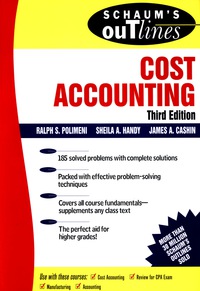Answered step by step
Verified Expert Solution
Question
1 Approved Answer
The Sarbanes-Oxley Act of 2002 (SOX) was created, in part, to address cases of companies making fraudulent entries to avoid reporting net losses. To find






The Sarbanes-Oxley Act of 2002 (SOX) was created, in part, to address cases of companies making fraudulent entries to avoid reporting net losses. To find evidence of this kind of earnings management, review the below Tableau dashboard, which includes available data from all U.S. public companies for 1985-2017 (except banks, financial institutions, and other regulated companies). By following the requirements below, you will discover whether earnings management occurred during certain periods. Required: 1. The graph displays, for more than 148,000 company-years, each company's net income divided by total stockholders' equity. By what name is this ratio known? 2. Select the statement that appropriately explains why the graph suggests evidence of earnings management. 3. Using the filter options in the upper right corner of the Tableau dashboard, select the "pre-SOX" years (i.e., 1985-2001) to alter the graph to show the number of companies reporting ratios prior to the implementation of SOX. a. How many companies reported a ratio near zero (red bar) in the pre-SOX period? b. How many companies reported a ratio near -0.015 in the pre-SOX period? c. How many companies reported a ratio near +0.015 in the pre-SOX period? d. Divide your answer in 3a by the total of your answers to 3a-3c. What fraction of the companies In 3a-3c reported a ratio near zero (red bar)? 4. Using the filter options in the upper right corner of the Tableau dashboard, select the "post-SOX" years (i.e., 2003-2017) to alter the graph to show the number of companies reporting ratios after the implementation of SOX. a. How many companies reported a ratio near zero (red bar) in the post-SOX period? b. How many companies reported a ratio near -0.015 in the post-SOX period? c. How many companies reported a ratio near +0.015 in the post-SOX period? d. Divide your answer in 4a by the total of your answers to 4a-4c. What fraction of the companies in 4a-4c reported a ratio near zero (red bar)? e. Do your answers in 3d and 4d suggest SOX was somewhat effective in reducing zero-income reporting? Complete this question by entering your answers in the tabs below. Required 1 Required 2 Required 3 Required 4 The graph displays, for more than 148,000 company-years, each company's net income divided by total stockholders' equity. By what name is this ratio known? OEarnings per share OReturn on assets Net profit margin OReturn on equity
Step by Step Solution
There are 3 Steps involved in it
Step: 1

Get Instant Access to Expert-Tailored Solutions
See step-by-step solutions with expert insights and AI powered tools for academic success
Step: 2

Step: 3

Ace Your Homework with AI
Get the answers you need in no time with our AI-driven, step-by-step assistance
Get Started


